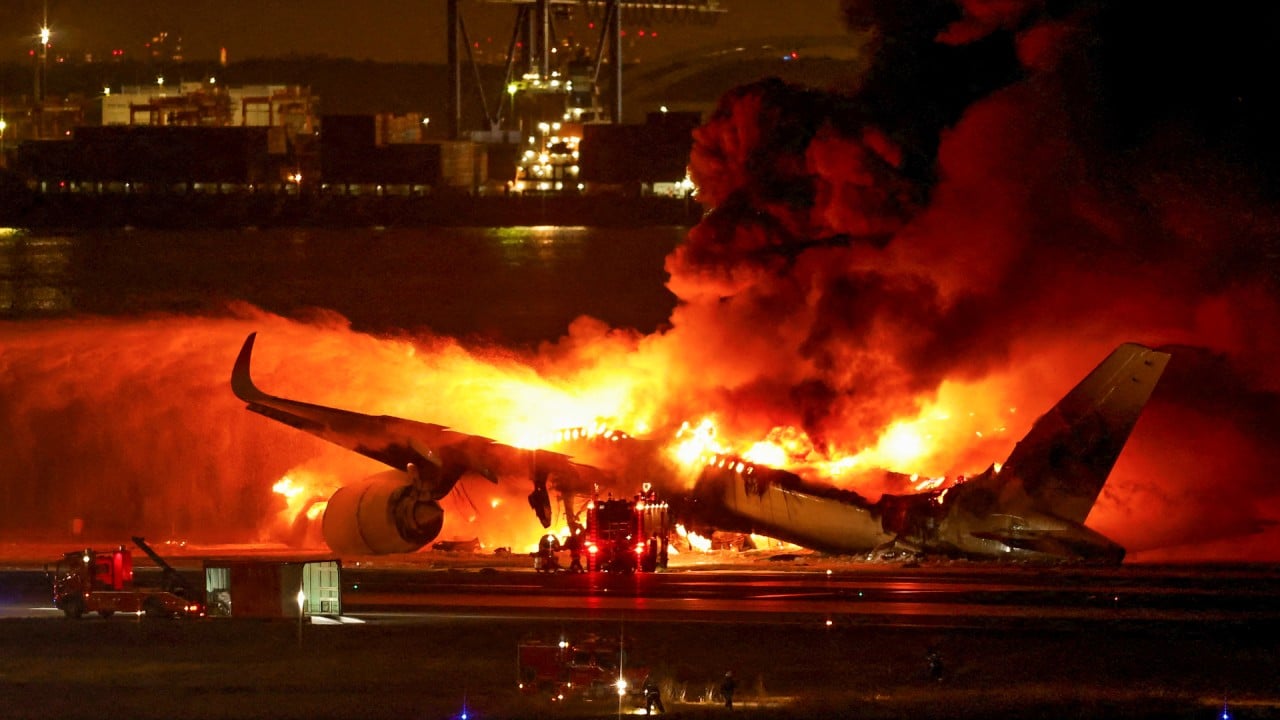US-bound ANA plane returns to Tokyo after drunk American passenger bites crew member
Japanese broadcaster TBS quoted the passenger as telling investigators that he “doesn’t recall at all” his behaviour, as he had taken a sleeping pill.
US regulator investigating Boeing 737 Max 9 after mid-air blowout
The incident left some social media users likening it in mock horror to the “beginning of a zombie movie”.
Others lamented the litany of Japanese aviation woes so far this year – with four other incidents making headlines in just over two weeks.
All 379 people on board the JAL Airbus escaped just before the aircraft was engulfed in flames.
Five of the six people on the smaller aircraft, which was helping in a relief operation after a major earthquake in central Japan, died.
Korean Air said the accident, which caused no injuries, happened after “the third-party ground handler vehicle slipped due to heavy snow.”
A similar mishap took place on Sunday when an ANA aircraft came into “contact” with a Delta Air Lines plane at a Chicago airport, the Japanese airline said.
No injuries were reported.
Man could face 20 years in jail for punching American Airlines crew member
Another ANA flight reportedly had to turn back on Saturday after a crack was discovered on the cockpit window of the Boeing 737-800.
“Wing strike” incidents “do happen” because many airports are handling bigger planes than they were built for, said Doug Drury, an aviation expert at Central Queensland University.
“The cracked window incident may have been caused by a faulty window heat system, as the temperatures are quite extreme at altitude,” he added.
“This is not uncommon and has happened to me during my career.”
